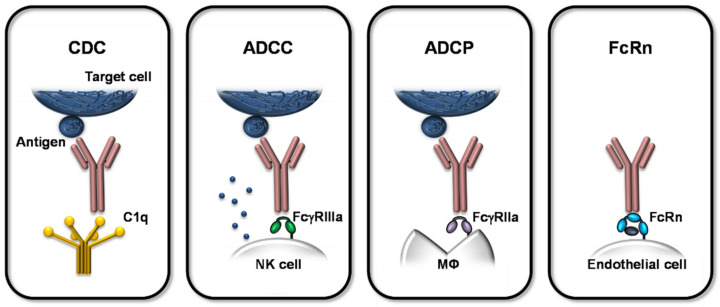Figure 2.
Overview of Fc-mediated effects of therapeutic mAbs. The Fc-mediated effector functions are classified into CDC, ADCC, ADCP, and binding to FcRn. During CDC, the Fc domain of the mAb interacts with complement component C1q, inducing the activation of the complement cascade and subsequent cytotoxic effects. ADCC is mediated via NK cells activated by the interaction of cell-bound FcγRIIIa with the mAb’s Fc part. The activation mediates cytotoxic effector functions resulting in death of the target cell. ADCP is induced by interaction of the mAb’s Fc part and FcγRIIa on macrophages (MΦ), which in turn augments their phagocytic activity. CDC, ADCC, and ADCP result in the depletion of the specifically bound target cell, whereas only ADCC and ADCP involve Fc:FcγR binding. FcRn is expressed on, e.g., endothelial cells and binds antibodies pH-dependently. This interaction is critical for the turnover and serum half-life of mAbs and it also mediates the transfer of maternal antibodies to the fetus across the placental barrier during pregnancy.

